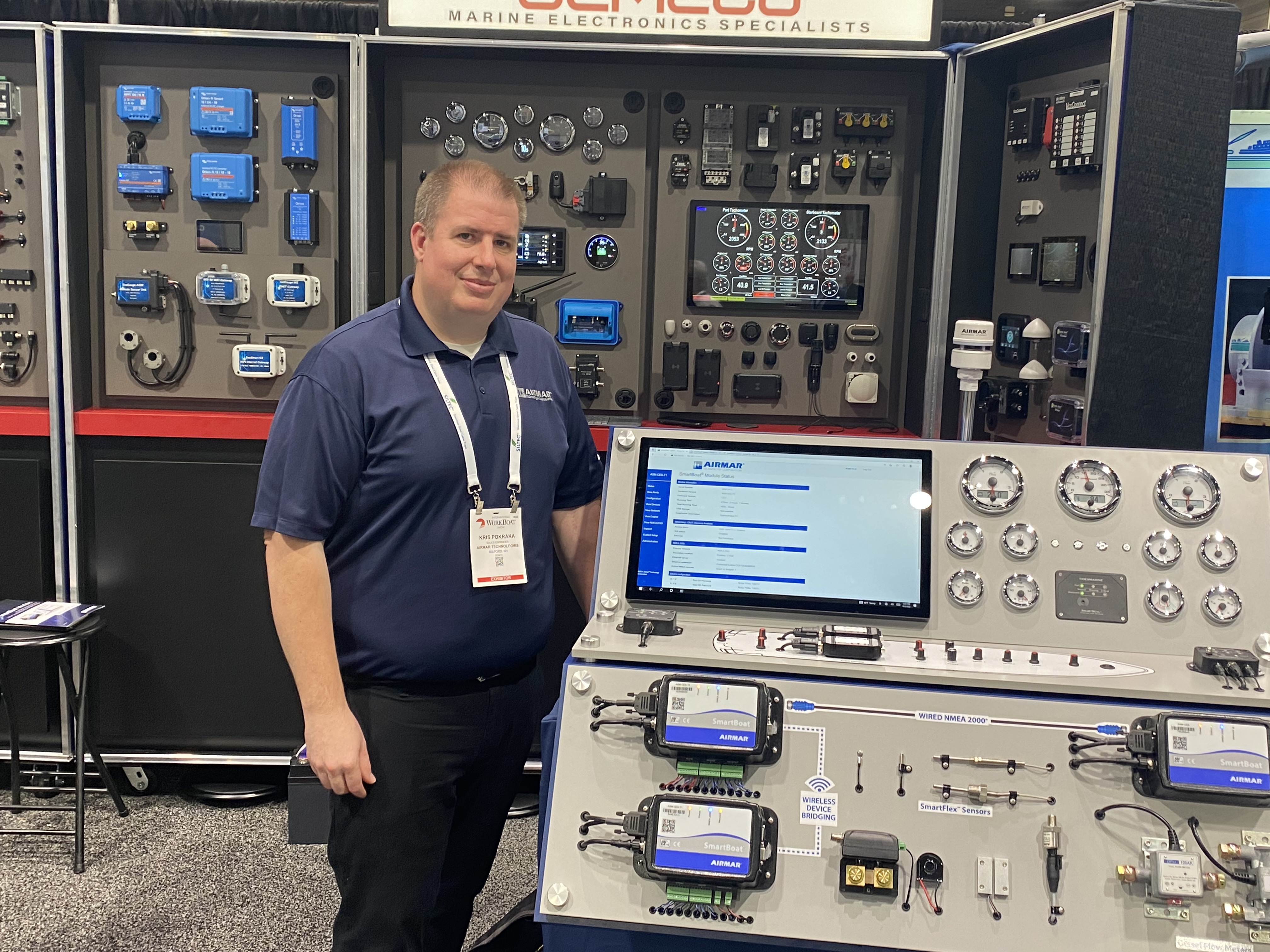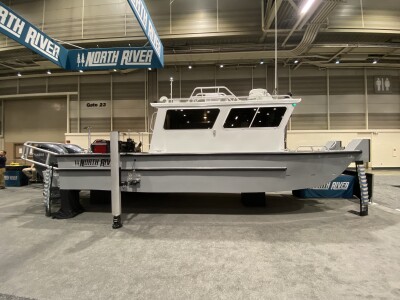The commercial marine industry is becoming more intertwined with technology. That was on display at this year’s International WorkBoat Show in New Orleans with companies showing off all kinds of innovative products to help the industry more seamlessly and efficiently do their jobs.
Included in that technology is a variety of sensors that can derive all sorts of information, tracking things like current loops, temperatures, wind conditions and more. One of the issues with these sensors, though, is their disparate nature. Airmar, Milford, N.H., has recently released their SmartBoat System for exactly that reason, creating an intuitive system to pull data from all of these different sensors into one location.
At the WorkBoat Show, Airmar's Kris Pokraka explained some of the functions of the SmartBoat System, the most important point being that the system is designed specifically to be sensor-agnostic. Airmar does manufacture their own sensors for a variety of uses, but in designing this system they wanted to be sure it didn’t need to be matched with their own hardware. The potential headache, to say nothing of the financial commitment, of having to completely overhaul a system of sensors on a vessel of any kind would likely be enough to dissuade an owner from installing this kind of system to integrate all of this information. Instead, any NMEA 2000 network can be utilized.
In addition to ensuring that most any brand of sensor can be included in a built-out system, the other key piece was the simplicity of the interface. When looking to get the readings from these different sensors, there is not a significant amount of technical knowledge needed to derive value. The SmartBoat interface is available as a browser application, with a user simply needing a Wi-Fi-connected device to log in. Once in the interface, the system is completely customizable with drop-down menus being present for each sensor to track exactly what needs to be tracked for a specific use case.
Users can set customized alarms for different sensors to receive alerts if something goes above or below a given threshold and can do things like set automated controls for awnings to be lowered and raised depending on wind levels. Additionally, the configuration of modules can be saved once the job is complete. This is particularly important for boatbuilders who may be looking to build out the same system for a large number of boats. With this functionality, that would only need to be completed the one time before saving it and pre-loading and cloning it onto subsequent boats.
These can be implemented in existing vessels as well, with Pokraka pointing to the ability to do so in older boats as one of the valuable use cases in Airmar’s eyes. This ties back to the ability to connect any kind of sensor, as older boats often have a number of sensors already on board that would be extremely expensive to replace.
“When someone wants to go to a newer display, they don’t have to spend thousands of dollars to replace all the sensors," Pokraka said. "What [SmartBoat] solves is taking those sensors that are existing on the boat that are still functioning, and being able to upgrade them to an NMEA 2000 network and display them digitally right to a dash.”
He also notes that some older boats can’t read pressure currently because the gauges needed with their current sensors are no longer made, with this system allowing for those key measurements to be made without needing an overhaul of new sensors.
SmartBoat was introduced to the market in 2021, and in 2022 won an NMEA Technology Award.





